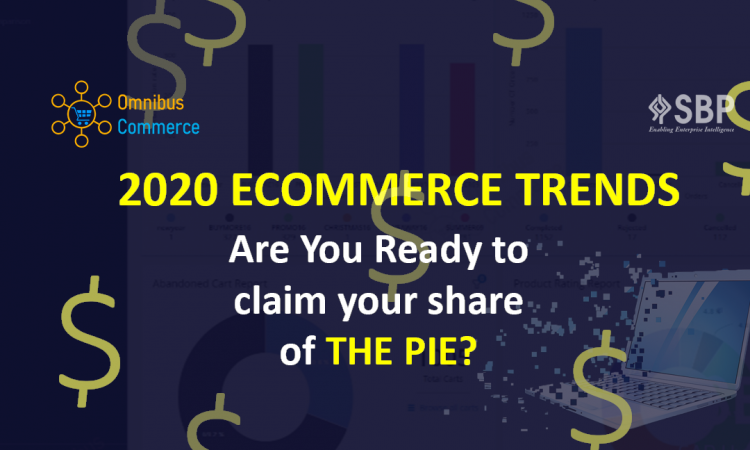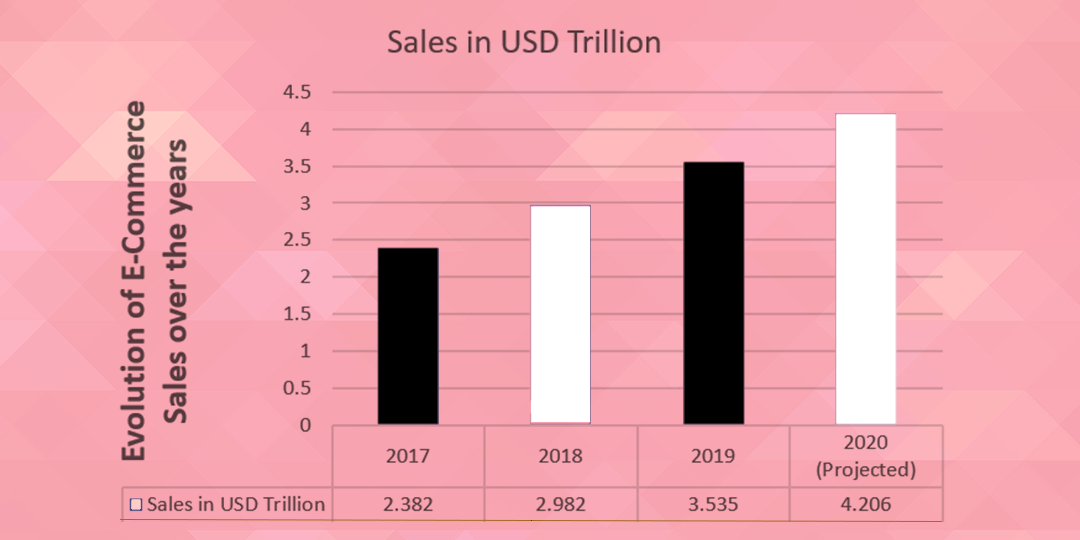
Top Ecommerce Trends of 2020
Ecommerce is an ever-growing industry. Starting from selling of a book in a garage in 1994 by Amazon, the industry has been growing exponentially ever-since. It is estimated that over 57% of retail sales in the year 2020 are from Ecommerce. The industry is still experiencing double digit growth with every passing year. The Ecommerce industry is expected to increase from USD 3.5 Trillion in 2019 to USD 4.2 Trillion by the end of 2020.

Although there are an estimated 24 million Ecommerce websites, over a million of such websites make less than USD 1000 per year in annual sales and have great potential. In this quest to explore this vast market, Retailers or Brands need to constantly adopt to the latest Ecommerce trends.
Here are our picks on the Top Ecommerce Trends of 2020:
-
Direct to Customer: Direct to customers is an extremely efficient method to market products to consumers. Establishments can enlist themselves on an online platform and propagate their products and/or services directly to consumers while eliminating all or most of the middle level channels.
-
Product Personalization: Customization plays a very important role in Ecommerce. With the advancement of manufacturing technologies, mass customization is becoming a growing trend in the retail industry, most customers do not want to settle for generic products and/or services but instead would want a little bit of customization.
-
Voice Search: Voice assistants like Apple’s Siri, Amazon’s Alexa, and Google’s Assistant are getting more and more popular. It’s predicted that 8 billion devices (including smartphones) would be with voice assistants by 2023.
-
B2B commerce presence: The interfaces of B2B platforms differ from those we know from regular online stores. A good B2B platform tailored for 2020 will, however, allow you to personalize customer experiences based on their role, the company they work for, or the device they use.
-
AI Personalization and Chatbots: The use of artificial intelligence is growing with each passing day. Artificial intelligence, with the use of a lot of primary data and trends has proven to be more effective in terms of ROI and tapping into the impulsive purchase behavior of the shopper.
-
Augmented Reality: Consumers also tend to drift towards the tangible aspect of products. Augmented Reality helps bridge this gap to an extent where it helps a consumer have a virtual experience of the product or services before making the purchase decision.
-
Integrated Payment and Shipment Tracking: A lot of Ecommerce consumers have stated that they look forward to an online shopping experience where they not just find a wide plethora of products under one roof but also the convenience of making an electronic payment and being able to track their purchased goods on one single platform.
-
Faster Shipping modes: With the introduction of concepts like one day, two day and same day delivery, Amazon has raised the bar for Ecommerce entities where in shoppers on various online platforms, have now another method of filtration, and depending upon the urgency of the situation and availability can opt for faster delivery options.
-
Cross-border Ecommerce: Due to the advancement of Information Technology and improvements in logistics, cross border Ecommerce is becoming a well sought-after phenomenon. Alibaba for example the world’s second largest Ecommerce tech giant, has played a major role in fueling this phenomenon, opening the Chinese market to the rest of the world.
-
Influencer marketing: Customer spends more time on social media than on a website. Gaining ground in social media has become one of the most necessary factors to increase business appeal & profit.
Ecommerce platforms such as SAP Hybris Commerce have proven to be very efficient in assisting business ventures capitalize on the growing Ecommerce trends.
SBP offers SAP Hybris Commerce services to help you make the best of online retailing.
Reach out to us on “getHybris@sbpcorp.com” for a demo on our portfolio of products “Omnibus Commerce for SAP Commerce”.



